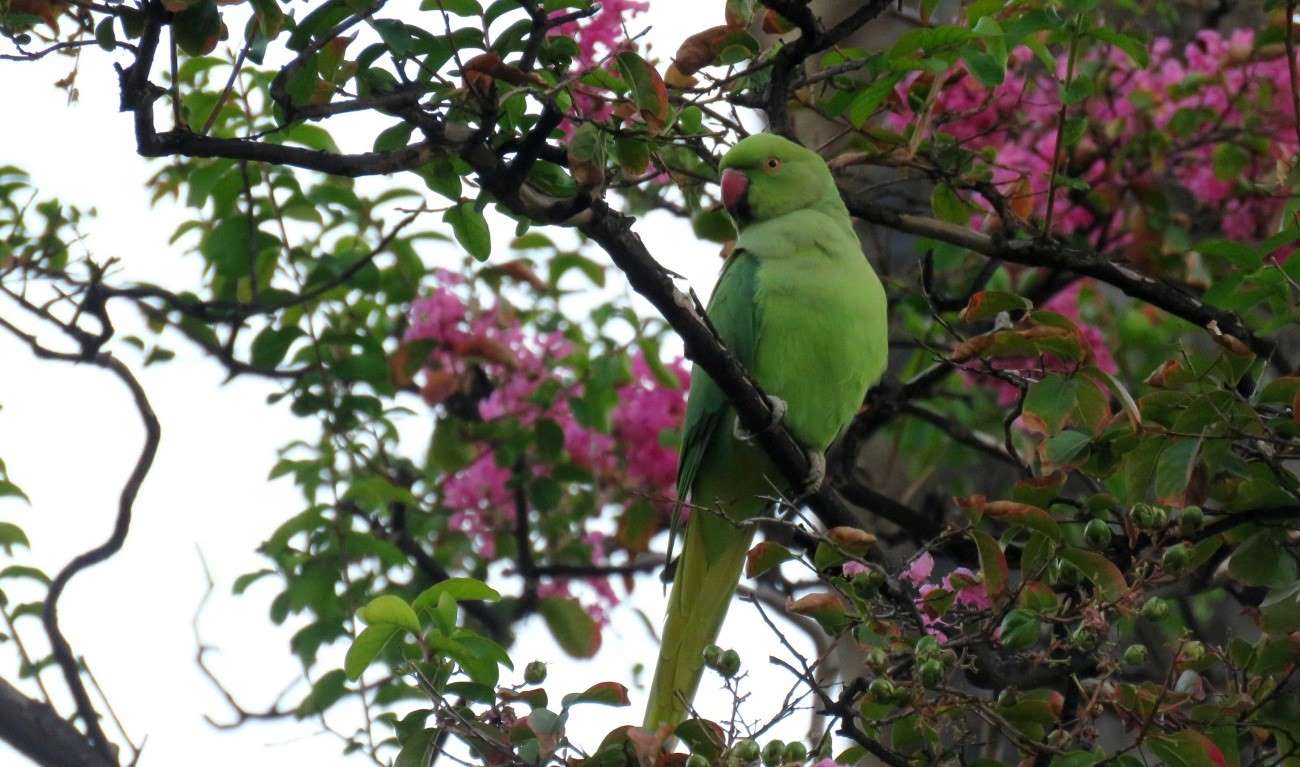The perceptions of the general public regarding invasive alien species (IAS) are important in the prevention of future invasions and the success of management programmes. A novel visual method was used to investigate the perception of a charismatic IAS, the rose-ringed parakeet, across different stakeholders in Seville, Spain. Respondents were asked to select images of 10 bird species they would like to have present in their surroundings, out of 20 available images, including the parakeet and three other non-natives. This makes the survey easy, fast to take and attractive to potential participants, while prior and potentially biasing information of survey goals is minimised. Although more than 95% of the respondents recognised the parakeet, at least up to family level, only 34.8% selected it. Selection rates were even lower for three other IAS and even more so when the status of non-native species was indicated next to the images, suggesting that a social norm against IAS may be established. To validate this novel visual approach, perception via a traditional questionnaire was also assessed and the results of the two survey methods coincided. Finally parakeet selection differed importantly amongst pre-defined sectors of the public and people who had prior experience with the parakeet selected it less frequently (e.g. farmers, park managers). These results highlight the importance of studying different stakeholders to get the full picture when considering IAS management programmes. This new visual survey method can thus serve as an excellent and user-friendly tool to study people's perceptions regarding charismatic IAS and facilitate well-informed and sensible decision-making. informacion[at]ebd.csic.es: Luna et al (2019) Assessment of social perception of an invasive parakeet using a novel visual survey method. NeoBiota DOI 10.3897/neobiota.42.31017
https://neobiota.pensoft.net/article/31017/  Latest News
Latest News
 Las altas temperaturas están provocando que las lagunas y las marismas de Doñana pierdan agua rápidamente
Las altas temperaturas están provocando que las lagunas y las marismas de Doñana pierdan agua rápidamente
La superficie inundada en la marisma es de un 78% pero la profundidad es escasa. Por otra parte, sólo el 1,9% de las lagunas temporales están inundadas. Las precipitaciones crean una oportunidad...
 Traffic noise causes lifelong harm to baby birds
Traffic noise causes lifelong harm to baby birds
A study with CSIC participation reveals for the first time that car noise harms individuals throughout their lifetime even years after exposure
 Illegal wildlife trade, a serious problem for biodiversity and human health
Illegal wildlife trade, a serious problem for biodiversity and human health
A research team led by the Doñana BIological Station and the University Pablo de Olavide have detected wild-caught pets in 95% of the localities in the Neotropic and warns of the risk of zoonotic...
 Urbanization and loss of woody vegetation are changing key traits of arthropod communities
Urbanization and loss of woody vegetation are changing key traits of arthropod communities
Urbanization is favouring smaller beetle species and larger spider species with greater dispersal capacity.
The loss of woody areas is linked to a decline in the duration of the activity...
The loss of woody areas is linked to a decline in the duration of the activity...
 Blood lead levels in an endangered vulture species decreased following restrictions on hunting practices
Blood lead levels in an endangered vulture species decreased following restrictions on hunting practices
Canarian Egyptian vulture was on the verge of extinction at the end of the 20th century. At that time, studies revealed that lead poisoning was a serious problem for the population’s survival. The...
— 5 Items per Page
 Asset Publisher
Asset Publisher
Back






